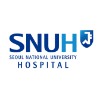
COPE Intervention for Parents of Children With Epilepsy
EpilepsyThe purpose of this study is to determine if the program Creating Opportunities for Parent Empowerment (COPE) is feasible to administer to parents of children with neurological conditions. The goal of the study is to empower parents by providing them with educational materials designed to teach them how to foster healthy coping skills in their child.

TAK-935 Multiple Rising Dose Study in Healthy Participants
EpilepsyThe purpose of this study is to assess the safety, tolerability and pharmacokinetics (PK) of multiple rising doses of TAK-935 in healthy participants.

Study to Evaluate a New Device Designed to Collect Heart Activity and Body Movement Data
EpilepsyThis study is designed to collect data to support development of a novel product designed to sense changes in heart rate or movement during periods of sleep in people with epilepsy. When a potential seizure is detected, the system sends out an audio-visual notification.

Coping Skills Training (CST) for Children With Chronic Health Conditions
Rheumatologic Conditions (JRA,Lupus)Epilepsy2 morePurpose of the study The purpose of this study is to pilot an adapted Coping Skills Training (CST) intervention for feasibility and preliminary efficacy with a sample of children 8 to 12 years of age and their parents. The participants in this study at Children's Hospital of Wisconsin are dealing with one of three chronic health conditions (Rheumatologic Conditions, Epilepsy,Spina Bifida, and Asthma). Research Questions/Study Aims The research questions addressed in the full study are: What is the impact of CST on child depression, QOL, health motivation, attitude toward illness, and self-management efficacy? What is the impact of CST on parent depression, perception of child's quality of life, perception of impact of CHC on family, and family conflict?

Deep Brain Stimulation of the Anterior Nucleus of the Thalamus in Refractory Epilepsy
Refractory EpilepsyEvaluate the long-term clinical effectiveness and safety of the PINS Deep Brain Stimulation to patients with refractory epilepsy.

Immunotherapy in Intractable Cryptogenic Epilepsy Patients With Autoimmune Antibody
EpilepsyUnspecified1 moreThe purpose of the study is to investigate effect of immunotherapy in intractable cryptogenic epilepsy patients with autoimmune antibody.

Ultra High Field MRI of Focal Pediatric Epilepsy
EpilepsyEpilepsy affects a significant number of children in the United States. The majority of patients achieve control of their seizures by conventional treatment strategies including medications. However, one third of patients do not achieve satisfactory seizure control with medications alone. Ketogenic diet and lifestyle modifications may also be tried. In some of these children, the seizure focus can be localized to one area of the brain and the seizures are resistant to conservative treatment strategies. These children may have subtle structural/developmental abnormalities in their brain, the most frequent of which is focal cortical dysplasia. These are localized areas of abnormal lamination of the cerebral cortex that can be extremely subtle and difficult to detect, even with state of the art magnetic resonance imaging (MRI). More importantly, these lesions may be amenable to surgical resection resulting in marked decrease in frequency or even resolution of seizures. MRI is a noninvasive imaging modality without ionizing radiation that has played a central role in the assessment of anatomy, physiology/pathophysiology of children with epilepsy. It is particularly useful in children with refractory focal epilepsy. Prior studies have shown that high resolution, high-field (3T) MR imaging of the brain helps to identify subtle focal epileptogenic abnormalities, including focal cortical dysplasia, in some patients. However, there is scarce data directly comparing the performance of ultra high-field (7T) MRI, currently an investigative technique offering optimized contrast and signal-to-noise rations and superior spatial resolution, with clinically available 3T MR imaging. The purpose of this study is to evaluate whether ultra high-field (7T) MR imaging improves detection and characterization of subtle structural epileptogenic abnormalities in children with focal epilepsy. The importance of this research is that identification of a focal epileptogenic lesion in children with refractory epilepsy has fundamental management implications, as surgical removal of such lesion may dramatically improve outcomes and the chance of seizure freedom.

Study of Predictors of Response to Anti Epilepsy in Epilepsy
SeizurePharmacoresistant epilepsy remains around 30% despite the development of 25 anti epileptic drugs. Of course, this can be explained by pharmacoresistant epileptic brain diseases, as exemplified by some genetic diseases. However, the lack of specific guidelines for the choice of the anti epileptic drugs (apart from generalized and partial epilepsy) and the very large number of drugs with different and sometimes complex metabolism are challenges for neurologists. Among the 30 % of pharmacoresistant epilepsy, there is a part related to pharmacokinetic drawbacks that could be overcome with a more rigorous approach (i.e. dosage and pharmacogenetics tools). Moreover, the new anti epileptic drugs have metabolism more unrelated with the cytochrome P450 and less generalised adverse events. However, their metabolism could be more complexe (i.e. the less known Uridine 5'-diphospho-glucuronyltransferase (UGT) pathway) and bring more insidious neurological adverse events (i.e. depression, anxiety exacerbation, cognitive disorders worsening) which could largely impede the observance and the quality of life even if the number of seizure is reduced or not. The goal is to determine the predictive and the modulating factors of pharmacoresistance with a global analysis (i.e. whatever the anti epileptic drugs) and with a specific analysis (drug by drug) from a cohort of 1000 patients.

Low vs. Standard Daily Doses of Antiepileptic Drugs in Newly Diagnosed, Previously Untreated Epilepsy(STANDLOW)...
EpilepsiesPartialThere are no guidelines on the first maintenance daily dose of antiepileptic drugs (AEDs) in newly diagnosed, previously untreated epilepsy. Original trials and Cochrane reviews show that seizure remission can be achieved with differing daily doses. In clinical practice, the first maintenance dose varies significantly. In contrast, the risk of adverse treatment effects increases with dosage. There is thus the need to identify the lowest effective dose for treatment start. This background prompted us to undertake a randomized multicenter pragmatic non-inferiority trial comparing standard to low daily doses of AEDs to demonstrate that low doses are at least as effective as standard doses (as indicated by the national formulary) but are better tolerated and are associated with a better quality of life. If proven as effective as the standard dose, a low daily dose of AEDs is a benefit to the patient in terms of tolerability and safety and a source of savings for the National Health System.

REC2Stim as a Treatment for Refractory Epilepsy in the Primary Sensorimotor Cortex.
Epileptic SeizureEpilepsy Intractable1 morePeople with central lobe epilepsy (CLE), with seizures arising from the primary sensorimotor cortex, typically show a high rate of convulsive seizures that do not respond to anti-epileptic drugs, but have a large impact on quality of life. They often seek surgical relief, but since the area contains the body's indispensable sensorimotor representation, CLE surgery will lead to permanent functional deficits. Cortical stimulation case studies in CLE have shown seizure frequency reduction of more than 90%, but in our experience, stimuli in the central lobe can hardly be applied without interfering with motor function. The investigators propose cortical electrical stimulation therapy of a conceptually novel type. The investigators systematically determine individual stimulation settings, stimulation site and a seizure detection algorithm. In REC2Stim (Rational Extra-eloquent Closed-loop Cortical Stimulation), at the start of a seizure, a train of electric pulses is delivered to a nearby extra-eloquent area connected with the epileptogenic area within the sensorimotor cortex. Success will constitute a therapeutic modality for pharmaco-resistant patients with an epileptic focus in eloquent areas.
